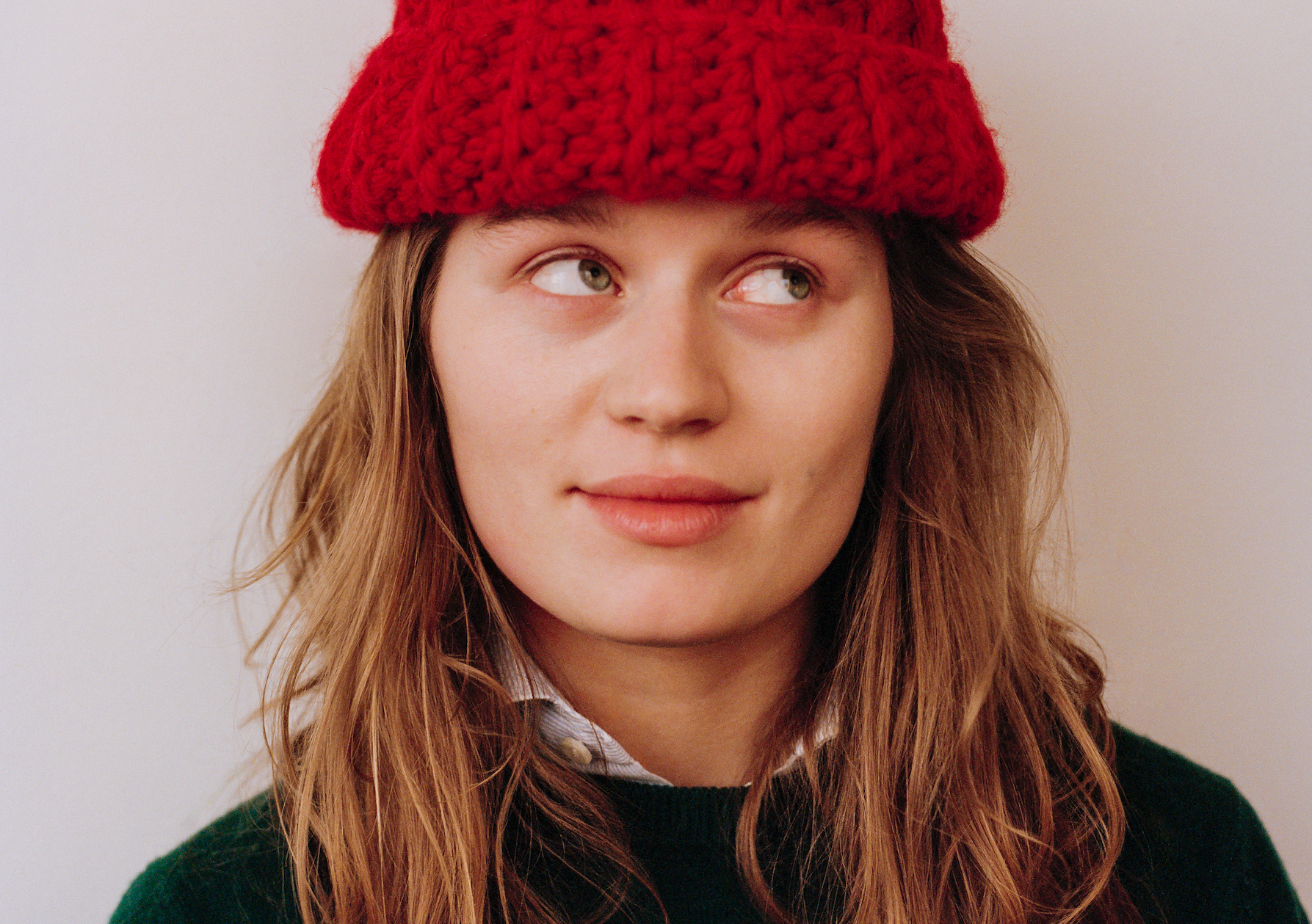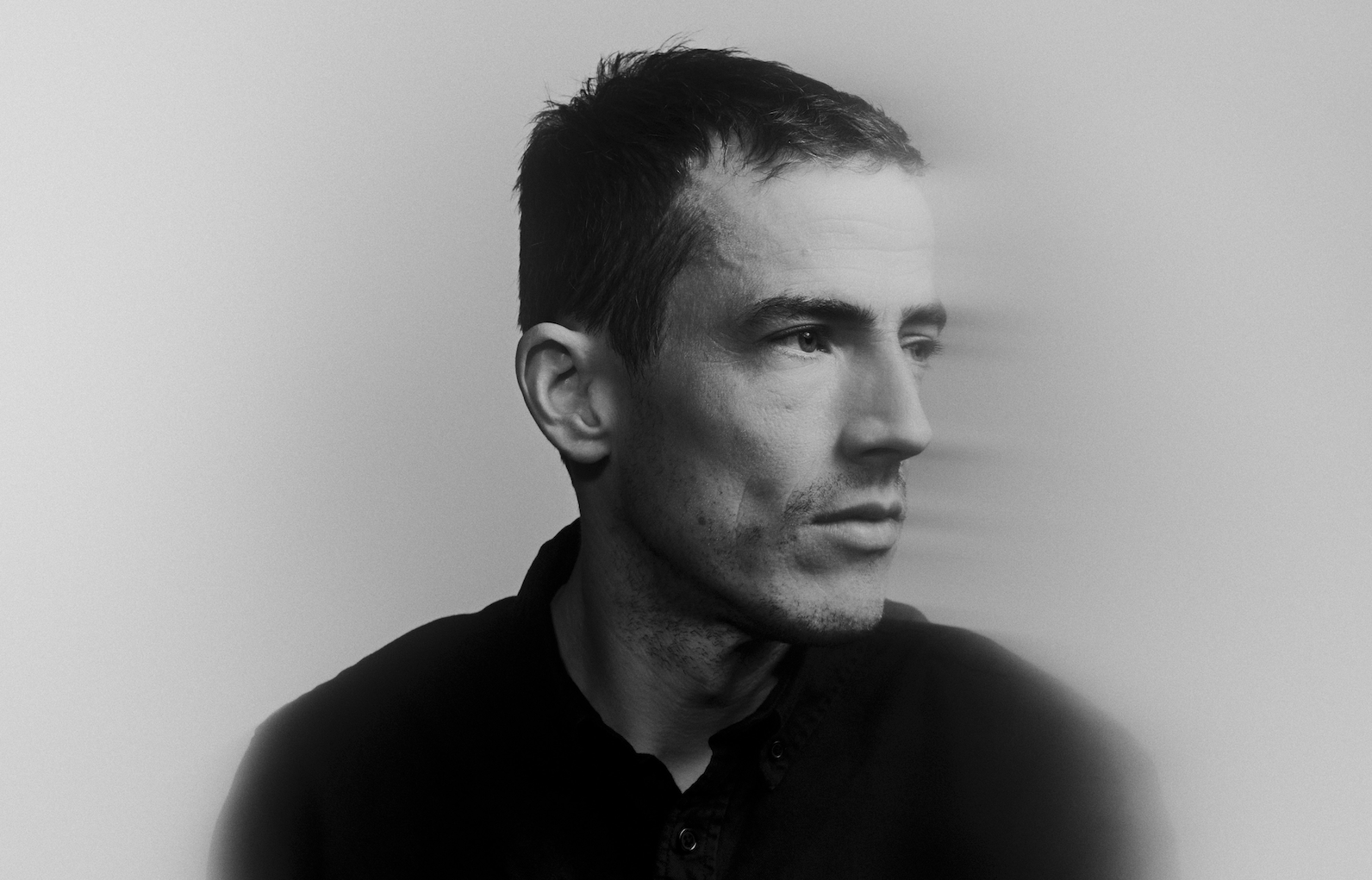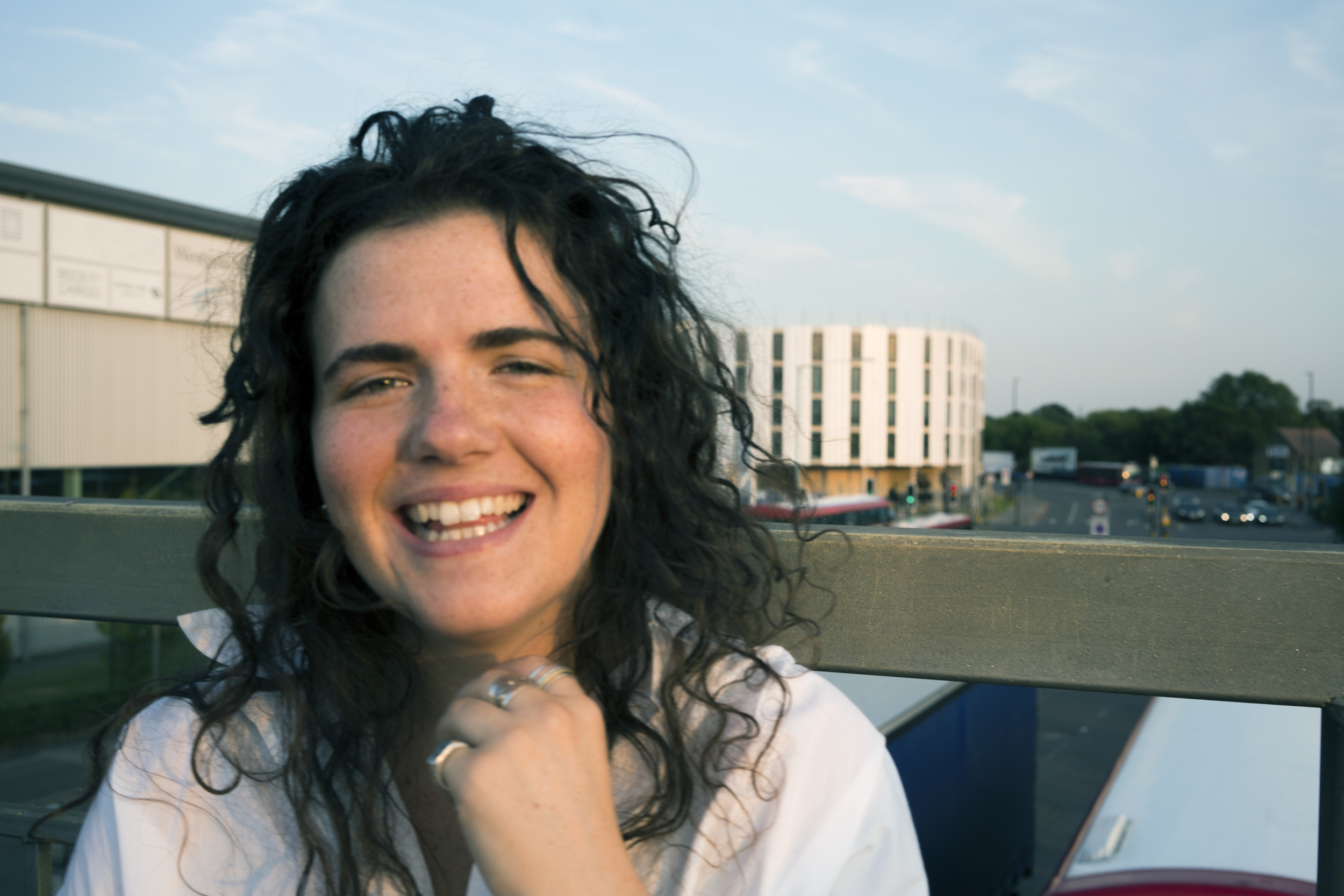Foto-© Rosie Marks
Georgia Barnes ist die wahrscheinlich heißeste Newcomerin, die das Vereinigte Königreich im Moment zu bieten hat. Und das, obwohl ihr Debütalbum schon 2015 erschienen ist und die neue Platte noch auf sich warten lässt. Ihre aktuelle Single „About Work The Dancefloor“ wird gerade rauf und runter gespielt, der Vorgängersong „Started Out“ war in der BBC Radio 1 A-List und den Top 15 der Shazam-Charts. Im September spielt Georgia auf dem Reeperbahn Festival 2019 (18.-21.09.2019).
Die Londonerin hat als Schlagzeugerin angefangen und spielte unter anderem für Kate Tempest. Und auch heute sind ihre Live-Shows, in denen die Frau mit den dunklen Locken hinter einem Schlagzeug steht, spielt und singt, geprägt von Rhythmus, Experimentierfreude und ihrer starken Präsenz. Letzten Mittwoch spielte sie beim flux.fm Bergfest in Berlin, wir haben sie vorher zum Interview getroffen. Im Gespräch erzählt sie, dass sie mit der neuen Platte ihr Songwriting auf ein neues Level gebracht hat, wie ihr das Schlagzeugspielen Disziplin verleiht und von ihrer Liebe zur Photographie. So kommt ihre aktuelle Single mit einem Foto aus dem Archiv der renommierten amerikanischen Photographin Nancy Honey. Außerdem sprachen wir über ihren Auftritt bei Glastonbury, die Schönheit eines heterogenen Publikums und einen Hamster namens Missy Elliott.
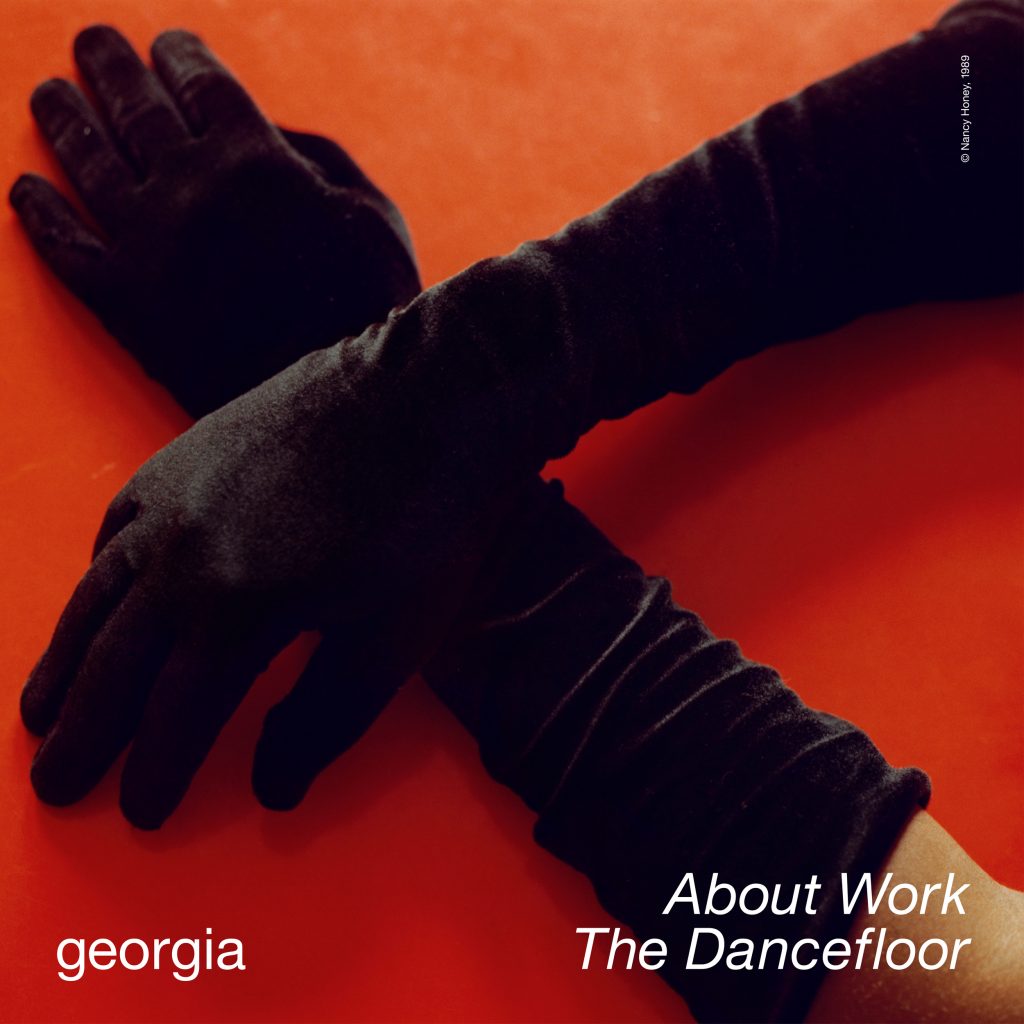
We love your new single “About Work The Dancefloor“— a song about the clubbing culture you experienced on tour. Can you tell us more about it?
What I found special was the collective experience. Clubs can provide safe spaces for people to express and feel liberated. The freedom of expression is what’s so unique about clubbing culture. That’s what inspired me when I first went clubbing and that’s what inspired this record.
We’re looking forward to your upcoming album, is it coming out this year?
We don’t know yet.
What can we expect musically?
Just more of the same thing, really. It’s more conceived than my first record. It’s a step up with songwriting. It’s been a real journey and I feel very proud of it. I’ve been able to achieve the things I’ve wanted to achieve at this level of songwriting. I’m very excited for the different sounds, and textures, and layers on the record. I hope it relates to people around the world.
As you said, your music is quite complex, there’s many layers, many instruments and you play all of them yourself. With what instrument do you feel most at home with musically?
In the studio, I don’t have a go-to instrument, I’m surrounded by my equipment and I feel very confident on it. If I play live, it’s drums. The live show is me, on my own, playing drums, and singing.
You have been a professional drummer – for Kate Tempest, for example – how was that step from being the drummer in a band to being a solo artist, the center of attention?
It wasn’t a conscious decision, I’ve always wanted to front my own project. With the style of drums I like to play, you play a very important role in the whole. The performance is focusing on the artist, but without that strong back bench of musicians, the artist falls apart. My role when playing with others was to create a safe space for these artists. That’s what I took from drumming and being the musical director in a band: the preparation. You have to be quite meticulous. But I wasn’t very conscious about it, I just did it. I didn’t think about it too much.
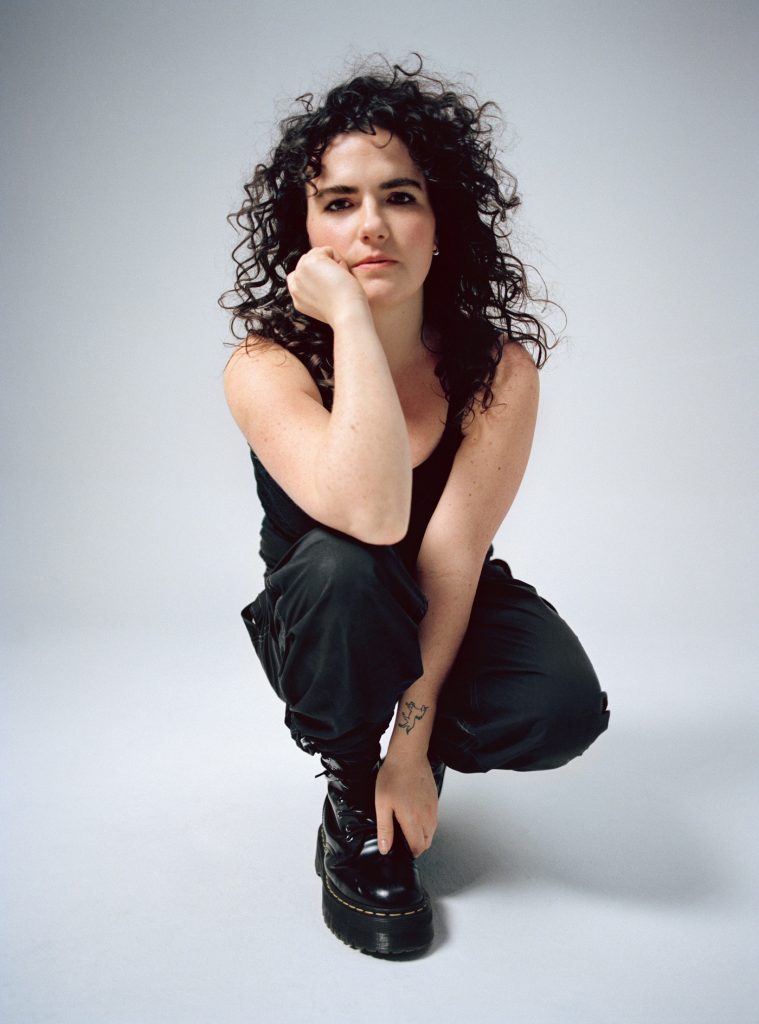
So, there wasn’t one particular moment when you decided that you wanted to be your own project?
No, it was a natural occurrence. I had this EP and I played it to my manager, and she said, “You’ve got to play live!”, I put a band together, I played live, and that was it. I really didn’t have much thoughts.
Your work is extraordinary well-received. Especially in the UK, it’s going through the roof now. Do you think there’s a special connection between artists and their local music scene?
It’s very hard for me to comment on this as I’ve always had a musical community. You can get sucked into a local community and that’s great for some people, but it’s then, how to break through. A lot of musicians can have that slight problem that they think they’re doing really well in a local scene, whereas actually… But then, what’s doing well, really? Playing in a pub full of friends on a Friday night after uni is sometimes a better feeling that getting A-List on a radio station.
Foto-© Hollie Fernando
Is it about being comfortable with your audience?
Yes, exactly.
When are you most comfortable with your audience?
I’m still building up a fan-base, I’m still finding my audience. It feels like now more than ever, the audience is coming. We just did some UK shows and the people there were from all backgrounds, genders, sexualities, of all ages and that felt really nice. And it was nice to see a wide variety of people coming.
But, talking about the UK music scene, how does it feel to play Glastonbury – one of the most iconic music festivals?
Glastonbury is one of the first festivals that ever existed, it’s very special. It definitely has this uniqueness to it, which is hard to emulate anywhere. It’s so big, we’re talking about nearly the size of a city. There’s so many bands playing from all over the world, from all different genres, and it feels very special to be part of that.
I read an interview with The Guardian from 2013, where you described yourself as a “melting pot”. How would you describe your sound today and who are your influences?
It has changed a lot. I’ve always said that my first record was a little melting pot, a little window into what could come. After that record came out, I went straight back into the studio and really tried to think about songwriting and song structures. The style hasn’t changed much, but it feels more conceived, the songs are more structured. It’s less experimenting. I’m setting out to achieve a certain thing, rather than, “That sounds great, I want to add this, I want to add that…”. I had to be really disciplined this time, because I wanted the music to be a bit more accessible as I’m trying to bring in the audience. My influences are Kate Bush, Depeche Mode, Chicago House, Detroit Techno…
Is it true that you had a pet hamster called Missy Elliott?
I did – Missy Elliott is amazing!
Speaking of artistical influences, I wanted to talk about the artwork on your single. It’s by the legendary photographer Nancy Honey and she allowed you to use the pictures from her archive. How did it come to that?
It was such an amazing moment when she agreed. She didn’t even agree, she was just like, “I’d love to work on this project!”.
So, you contacted her and asked for permission?
My creative director is a guy named Johnny and he knows many photographers. The first record was done by Jamie Hawkesworth, who’s now a huge name in photography. We originally asked Jamie to take the photos, but the timing wasn’t right for him. Johnny wanted to style the photographs like Nancy Honey and then he suggested to ask her directly and I thought it was a great idea. And she immediately wrote back and invited us over to her flat to talk about it. I think, she was just really humbled that we were interested in her work. And her work is phenomenal. Before that, I never really knew what I liked, although I knew that I loved photography. Seeing her work, was just wow… The sheer imagination that you can get off with photography is unlike any other art form. And she’s so amazing at capturing that moment.





